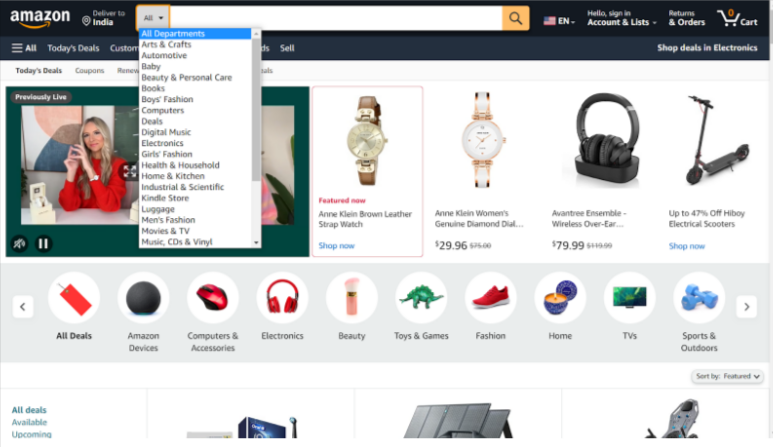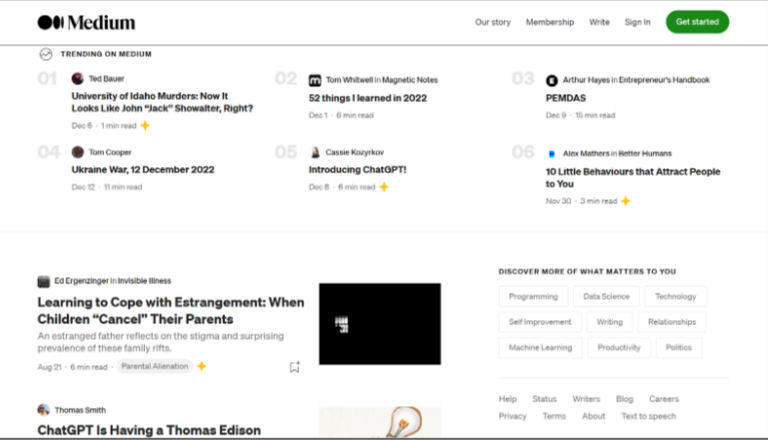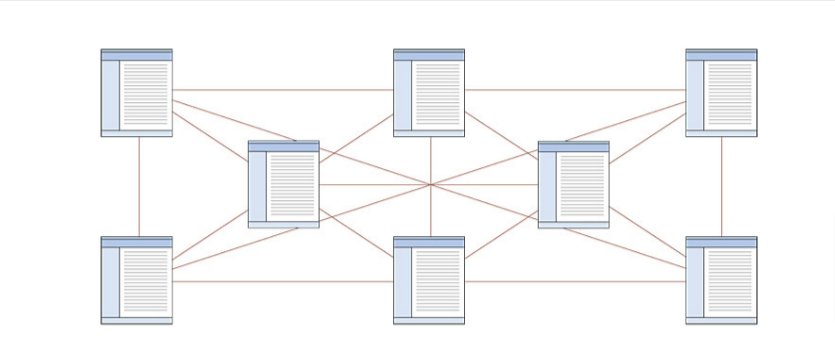Are you wondering why your website is still underperforming despite having so much content? Are your SEO efforts not giving the results you are expecting? If these are some of your concerns, you should revisit your content structuring. According to a study by GoodFirms, 34.6% of visitors leave a site when they see a poor content structure. The way the contents of your website are distributed and internally linked tells a lot about the kind of UX it will offer. Good UX will lead to more people interacting with your website AKA more clicks.
Let us understand the four main website structure types, how you can use content to optimize them, what website structure is best suited for your business, and how you can leverage different kinds of content to improve traffic.
According to a HubSpot report in 2021, 82% of marketers actively invest in content marketing. This shows that content is the most important piece of your traffic generation puzzle. Stay tuned till the end of this article for a bonus tip!
Ways to Create Website Structure and Content
There are four ways in which you can spread out the contents of your website. They are;
- Hierarchical / Tree-form – Websites that contain broader categories and topics in the front and are linked to specific pages from the broader links. Let’s understand this with an example. Consider the Amazon website; on the homepage, you see a long list of categories that lead to another list of subcategories and then the respective product pages. Every product page also contains links to similar products; people also bought product pages. This structured content with broad categories on top and the subcategories arranged layer after layer is called a Hierarchical website structure. Best suited for e-commerce websites.

- Sequential / Linear – This is a simple and traditional website structure. In this structure, you follow a page-to-page path, which works great for organizing content chronologically. As the name suggests, the sequential structure takes the user on a set path, one step after another. Startup and e-learning websites often use this model due to its simplicity and orderliness.
- Database – The database model involves a bottom-up approach to your site where you need to focus on the meta-data and tagging so that users can have a searchable content experience. A strong web development team is essential to run this model seamlessly. Medium is an excellent example of a Database structure where the content is organized across personalized categories in a way that it is easy for the user to navigate through the site. Websites offering a wide range of data go for database or matrix models.

- Matrix / Free-form – Matrix website structure is a complex model where every content in the website is interlinked in multiple levels. You can navigate through this type of site through search or suggested links. The best example of a Matrix model website is Wikipedia.

Tips And Best Practices for Well-Structured Content
Now that we understand what kind of website structure best suits what kind of businesses, let’s talk about how you should leverage content on these models to attract more traffic!
B2B Or B2C Good Content Is Always H2H!
Whether you are creating content to promote your business or increase sales, your audience is always human. Hence, creating content that solves your end-user needs and problems is essential. Defining your buyer persona and creating content that connects with your audience makes your content relatable. Organizing your website content in such a way that it will be easy for users to navigate is the easiest way to increase conversion rate.
Keyword Research Still Ranks Top
Despite many updates in the Google rank algorithm, keywords continue to garner the highest significance for SEO. Keyword research helps you rank on top of the SERPs and provides the exact information your audience needs. When it comes to content structuring, it is essential to place the right keywords in the right places and the appropriate keyword density on your web pages.
Link-loading Your Website Can Hurt More
Yes, adding links to your blogs and landing pages will get the link juice flowing in and out of your website. But loading your pages with umpteen links will not only mislead the crawlers but also create a bad user experience. Do not add more than 3 to 5 links per page. You should also check out some of the best link-building practices to ensure the right placement of links on your web pages. Ideally, placing links on the top of your web pages increases audience engagement.
Heading Hierarchy For Organized Content
Incorporating the H1/H2/H3 heading hierarchy is a popular optimization practice among SEOs. Organizing your content under relevant headings helps users and search engine crawlers easily navigate even through long-form content. This makes your website content engaging and easily readable.
Keep Navigation Depth Shallow
Few Clicks. That’s what every user is expecting from your website. They want to reach their destination page without traveling across multiple links, forms, and pages. They also want this to happen in less than a few seconds. Hence, ensuring a quick in-and-out of your website will reduce the bounce rate and increase conversion.
Show Breadcrumbs
Breadcrumbs have gained much attention, especially after mobile browsing has become the norm. Breadcrumbs help users quickly go back and forth on your website without starting afresh from the homepage. Imagine going to the cart on your website, and you want to edit your address. It will be frustrating if you can’t go to the previous page with a click. You might even abandon the cart. This is why breadcrumbs play a crucial role in content structure.
Include Schema Markup
Finally, by including structured data, a part of your website structure will take your content marketing game to the next level. Structured data components like JSON code, tags, and rich data increase the visibility of your content and, thereby, your website on SERPs.This can be achieved easily by including a Schema Markup on your site.
How To Make Content That Gets Clicks (and Connects!)
While website structure is a significant aspect of getting more clicks, Content is still king! If you have an amazing website with content that offers zero user value, it will ruin your user satisfaction despite a good UI/UX. Here are a few ways you can go about creating clickable content.
- Have a business blog – People search for information, guides, experiences, stories, etc., on Google. Offering answers to what they are searching for, especially concerning your business, will get you more clicks.
- Focus on evergreen topics – While focusing on trending topics and breakthrough ideas will grab a lot of attention, providing solutions to day-to-day issues makes your content relatable. It also increases brand loyalty.
- Write irresistible headlines – Headlines are the first things your user will see on your webpage. They will not scroll any further if it doesn’t hook their attention! If you have come this far in this article, it’s because the headline piqued your interest.
- Invite others to guest blog on your site – Guest blogging effectively increases content authority, especially when industry experts and influencers add value-rich content to your site.
- Create awesome visuals – Content that catches a reader’s eye stays in his mind too. Visual content offers the highest level of audience engagement and attraction. Great UI is directly proportional to a great UX.
- Incorporate video – Videos can deliver more information than long blog posts. Also, they require less scrolling and are a visually compelling communication medium. If you want the click, include the flick.
- Have a resource center – The Internet era is also the Information era. If you want users to regularly visit your site, engage with your content, and buy what you are offering, showing them that you care for their knowledge and interests and bridging the gaps is crucial.
What Structure Is Best Suited For Your Business?
As we approach the final part of this article, here is a table below that will help you identify the suitable website structure/model for your business.
| Type of business | Website Structure/Model |
| Large information sites/ e-commerce | Hierarchical |
| Simple websites, e-learning, linear websites | Sequential |
| Search Engines and Bank Websites | Database |
| E-Commerce/ product sites | Matrix |
Bonus Tip!
Optimize your website URL, include keywords, and avoid symbols and numbers so it is easy for crawlers to find.
Wrapping Up!
Content is the foremost human element of any website. Optimizing and structuring content so that it is easy for users to navigate, understand, and want to revisit when needed is the key to getting more clicks to your website. Take full advantage of the abundant potential content structuring has for attracting and retaining long-lasting audiences.


Ahmad Jamal - Content Writer
Latest posts by Ahmad Jamal - Content Writer (see all)
A deep dive into the On page and Off page SEO best practices
Is Link Building Still Worth Investing? Check out Link Building Strategies That Work!